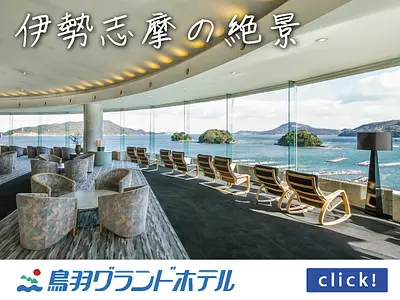Stroll around Sekijuku Tokaido. Introducing sightseeing courses that follow the post towns of Edo.
掲載日:2022.09.29
Mie Prefecture Sekijuku of KameyamaCity is the 47th inn town counting from Edo on the Tokaido 53rd itinerary. Here is a model sightseeing course to enjoy gourmet food while learning about the history at Sekijuku where the atmosphere of Edo still remains.
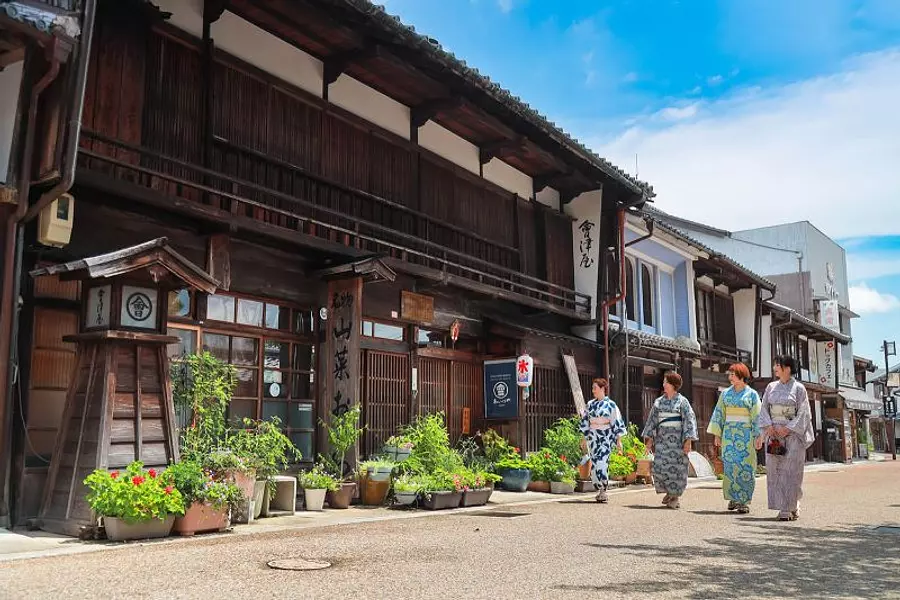
Article production / Mie Travel Camera Club Fugamaru-chan
▼Table of contents
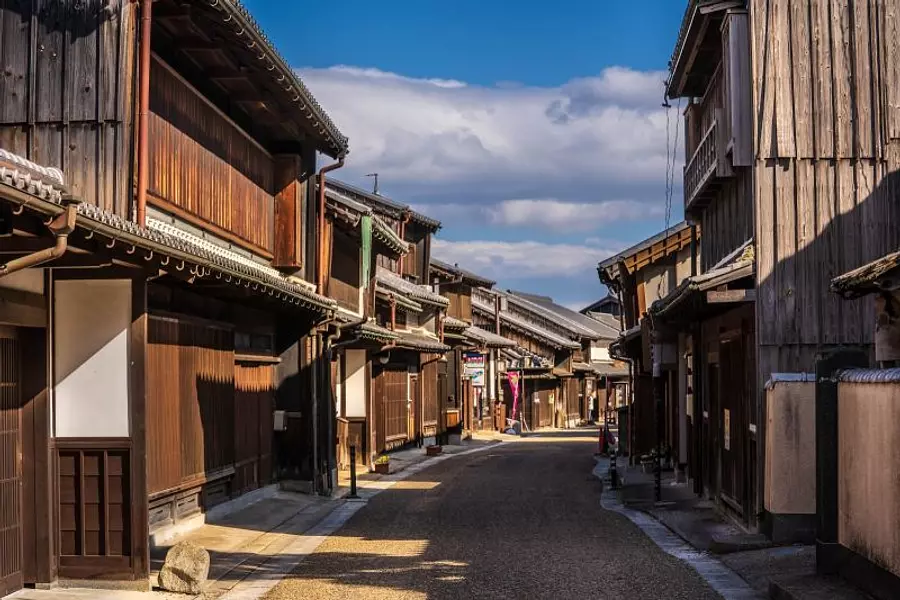
What is Tokaido Sekijuku?
Sekijuku is located in KameyamaCity located in the north central part of Mie Prefecture.
Of the 53 inns established during the Edo period (1603-1867), Tokaido the 47th, counting from Edo, is this "Sekijuku", also called Tokaido Sekijuku.
This post town, which was bustling with Sankintatai and Ise pilgrims, was designated as a national important traditional building preservation district (judenken) in 1981, and buildings from the Edo to Meiji eras are still carefully preserved. It has been.
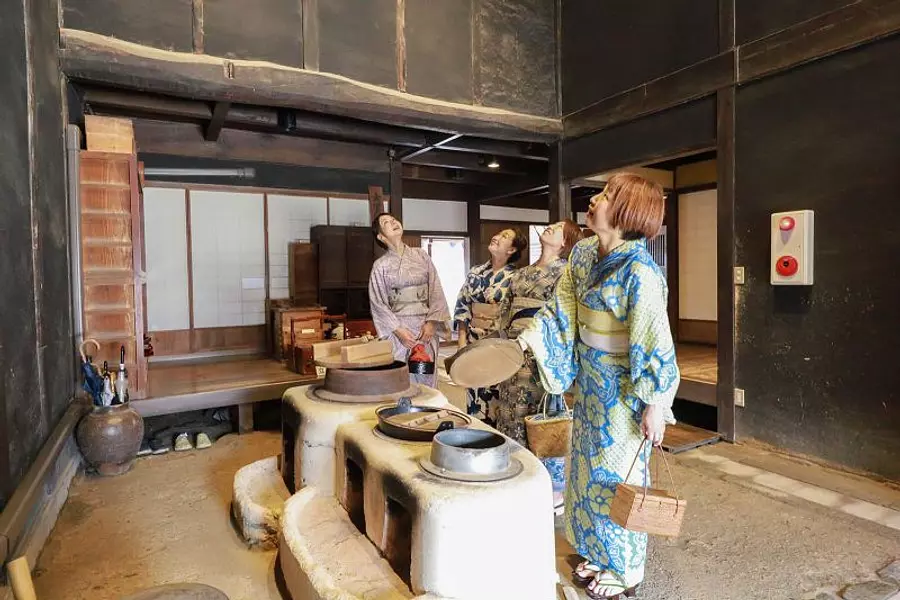
There are many ways to enjoy Sekijuku. It's the perfect location to tour a traditional inn, eat delicious gourmet food at a restaurant in an old folk house, and walk around town in a kimono.
In this article, we will introduce a model sightseeing course where you can fully enjoy the nostalgic Sekijuku.
Why not take a trip to enjoy gourmet food at a stylish cafe while tracing the history of Edo?
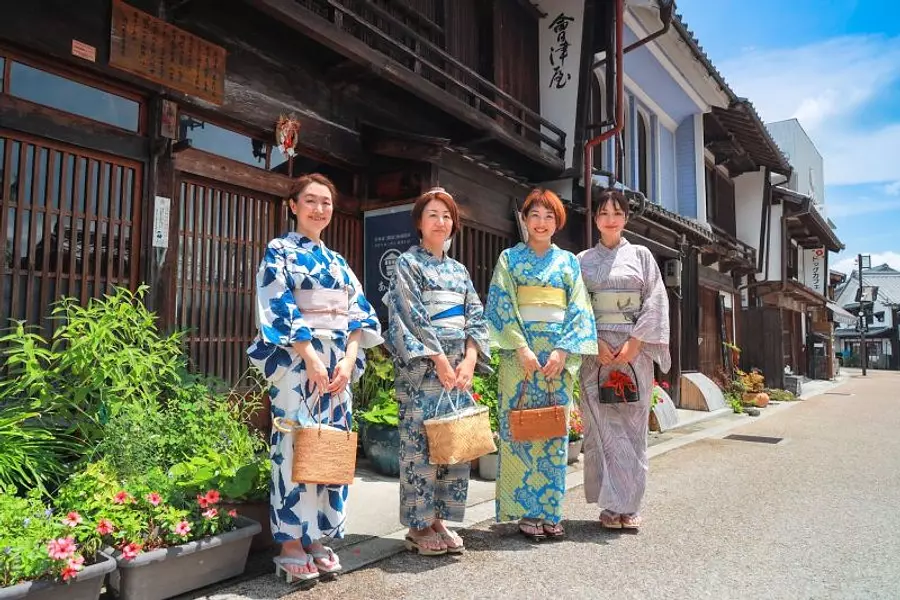
Tourism model course
This model course will take you through inns and historical museums, and explore the latest gourmet spots while learning about the history of Sekijuku.
It takes about 3 to 4 hours, and we will also introduce photo spots where you can enjoy walking around town wearing a kimono or yukata.
The yukata models in the photo are from the Mie Culture Love Association (Mie LCA)♪
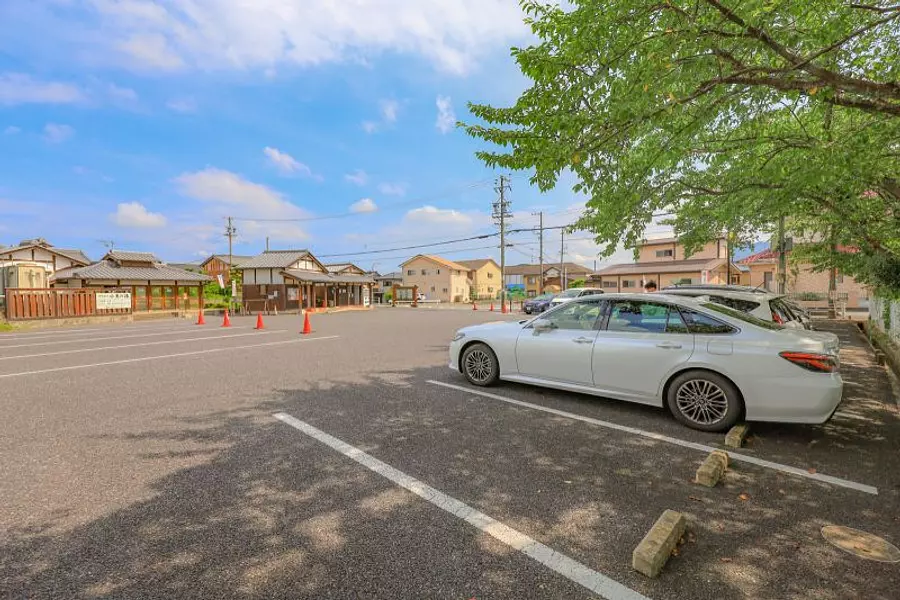
Tourist parking lot
Park your car at the sightseeing parking lot (free of charge) and start walking around town!
There is also a toilet here, so don't worry.
If you walk for about 3 minutes, you can access the old Tokaido lined with buildings from the Edo to Meiji eras.
About sightseeing parking lot
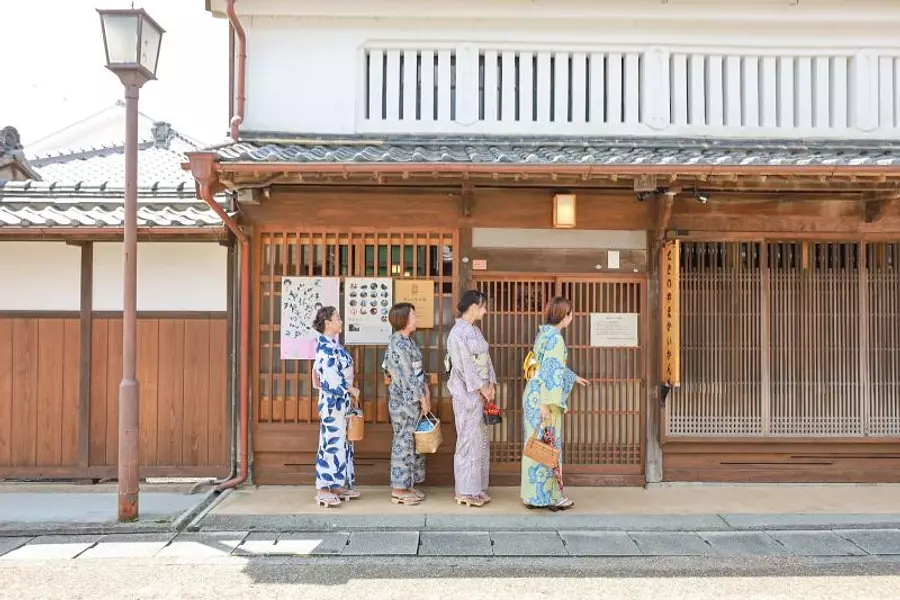
SekinoyamaKaikan
The first place I visited was the Seki Yamakaikan. It is about an 8 minute walk from the parking lot.
This facility opened on July 6, 2019, where you can learn about the history and culture of Sekijuku Gion Summer Festival, a traditional event that has continued since the Edo period.
There are four buildings on the grounds: the main building, an outbuilding, a storehouse, and a float storage and exhibition building.In the float storage and exhibition building, you can see the Seki Dashi floats that are displayed during the festival up close.
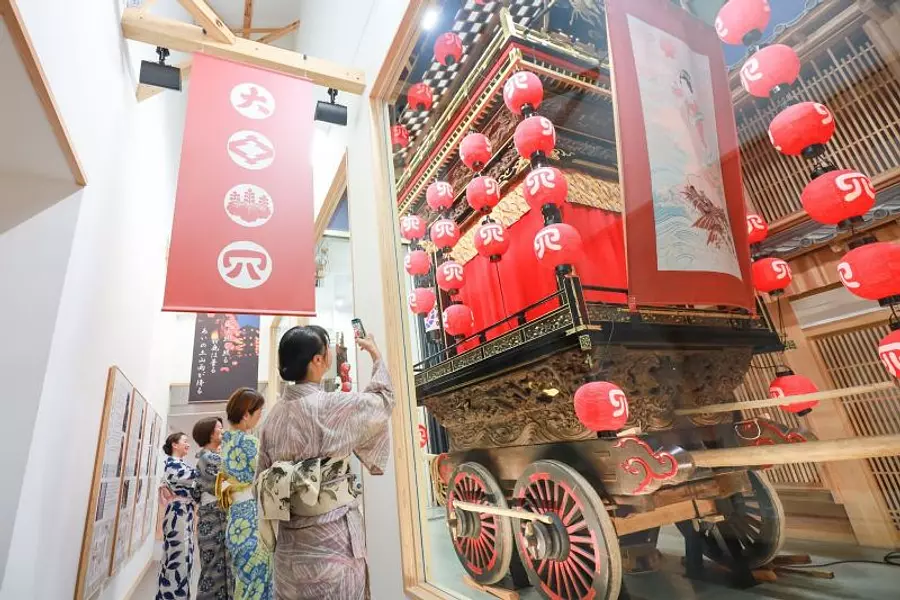
This is what it looked like when we toured the Seki Dashi and was overwhelmed by its size. It was OK to take pictures with smartphones and cameras, so I took a photo as a souvenir♪
There are said to have been 16 floats in the Edo period, but there are currently only 4 floats, and they have been designated as folk cultural assets of KameyamaCity.
On the night of the festival, floats are paraded through the town, and the ``stage mawashi,'' in which the floats rotate over and over again, is a spectacular performance.
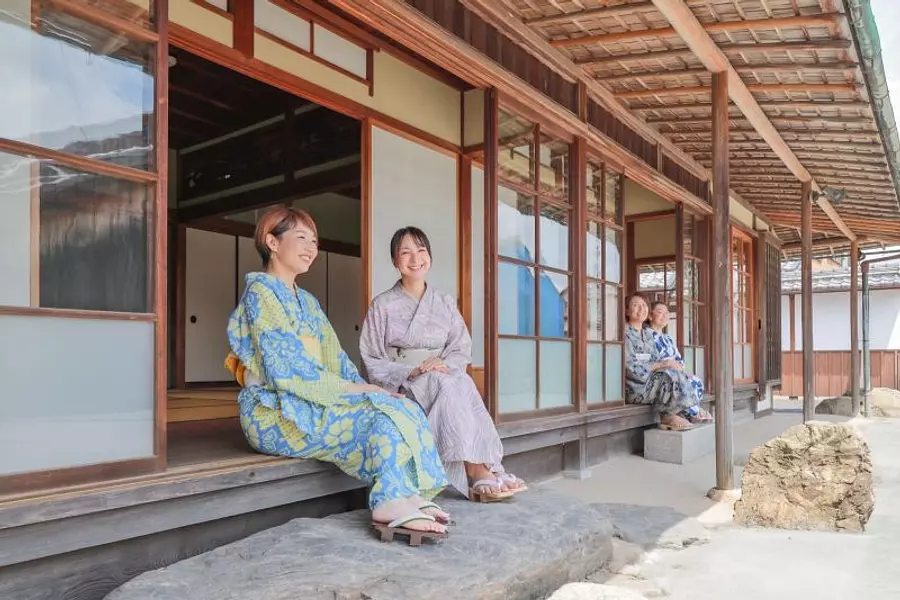
After learning about the history of the festival in the float storage and exhibition building, we headed to the outbuildings.
This is a resting place for visitors to Sekijuku and a place for people who live in Sekijuku to interact, and is a restored townhouse built around 1920.
At the time of the interview, it was a very hot day, but it felt cool sitting on the veranda in the shade.
It was also nice to be able to relax and soak in the nostalgic atmosphere.
SekinoyamaKaikan
0595-96-1103
Admission fee SekinoyamaKaikan single admission fee
Adult 300 yen (250 yen)
Students/Pupils/Children 200 yen (150 yen)
Common admission fee for 3 museums (SekijukuHatagoTamayaHistoryMuseum, Seki Machinami Museum, SekinoyamaKaikan)
Adult 500 yen (400 yen)
Students/Pupils/Children 300 yen (200 yen)
*Figures in parentheses are group rates for 30 or more people.
9:00 a.m. to 4:30 p.m.
Mondays (the next day if Monday is a holiday or substitute holiday), New Year's holidays (December 29th to January 3rd)
Sekijuku sightseeing parking lot (free)
About 6 minutes walk from JR Seki Station
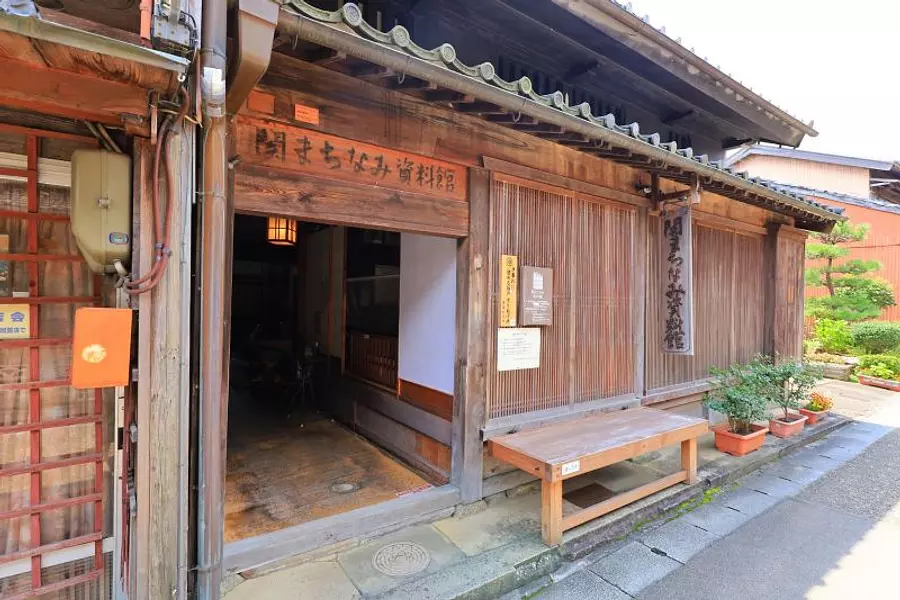
Seki Machinami Museum
Next, we visited the Seki Machinami Museum. It is located about a 2-minute walk from SekinoyamaKaikan, and is one of the townhouse buildings built at the end of the Edo period.
Here, the scenery that shows how people lived at that time has been preserved, and you can learn about the lives of common people during the Edo period from the building's floor plan, interior, furniture, and historical materials on display.
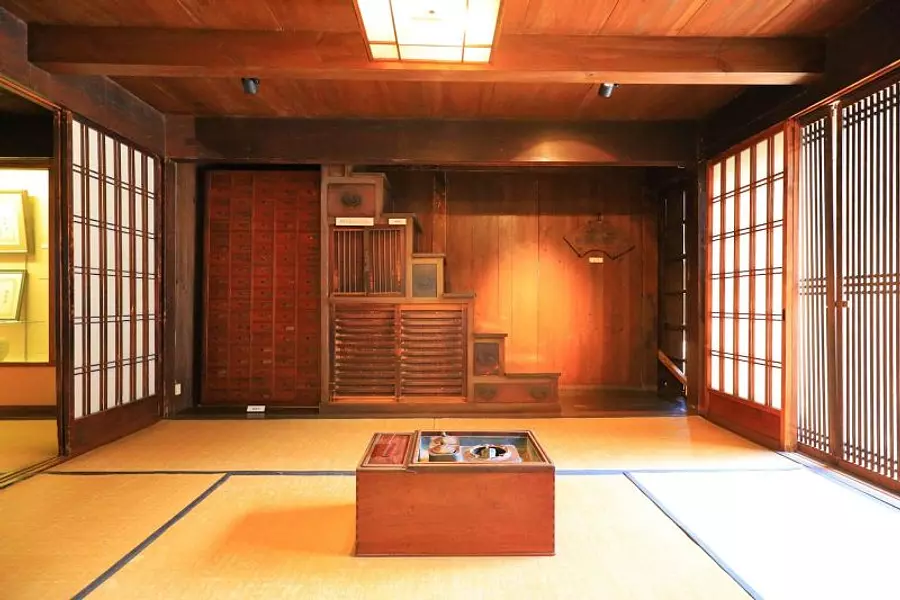
As soon as I entered, a box staircase, which is rare these days, was on display. This staircase also has a storage space like a chest of drawers, and you can see how the dead space was effectively utilized.
You can actually climb the box staircase and access the reference room on the second floor.
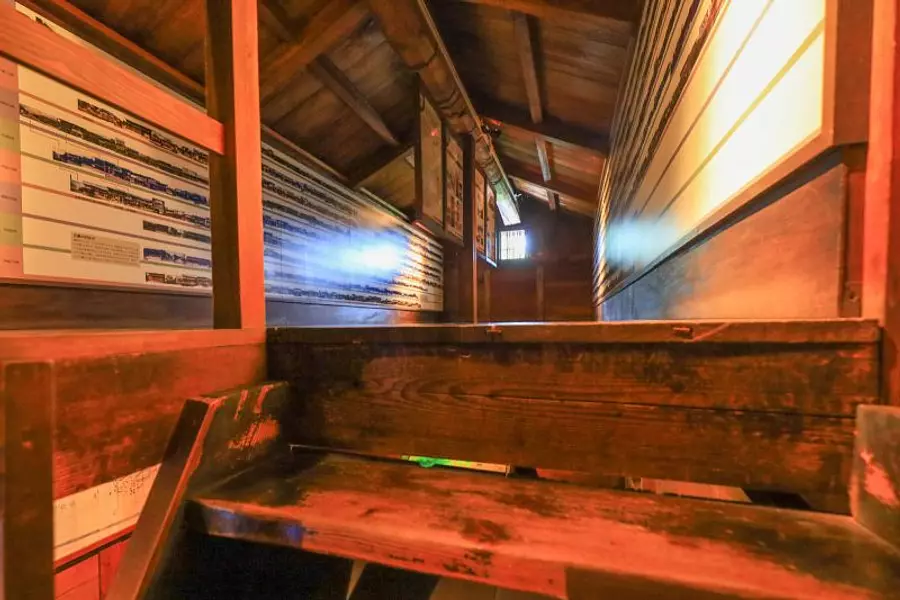
This is the second floor of the storehouse.
Here, panoramic photos of Sekijuku townscape taken over the years are displayed, allowing you to learn about the progress and achievements of the townscape preservation project.
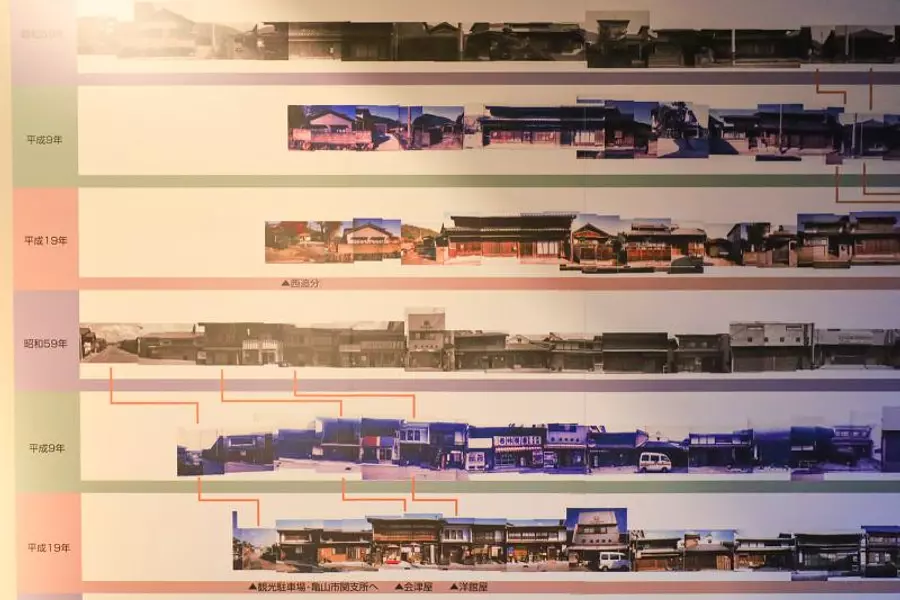
The oldest photo was taken in 1981, the year it was certified as a nationally important preservation district for groups of traditional buildings.
There are panoramic photos from 1997, 10 years after that, and 2007, 20 years after that, and the exhibit makes you realize that the old buildings have been preserved as they were at the time.
There are many buildings that are still preserved even in the Reiwa era, so one way to enjoy it is to try to find where the buildings shown in this panoramic photo are located.
Seki Machinami Museum
0595-96-2404
Common with SekijukuHatagoTamayaHistoryMuseum
Adult 300 yen (250 yen)
Students/Pupils/Children 200 yen (150 yen)
Common admission fee for 3 museums (SekijukuHatagoTamayaHistoryMuseum, Seki Machinami Museum, Sekinoyama Kaikan)
Adult 500 yen (400 yen)
Student/Student/Children 300 yen (200 yen)
*Figures in parentheses are group rates for 30 or more people.
9:00~16:30
Closed on Mondays (the next day if Monday is a holiday or substitute holiday) 12/28-1/4
Please park at Sekijuku sightseeing parking lot (about 15 minutes walk)
About 10 minutes walk from JR Seki Station
Approximately 10 minutes from Meihan National Highway Seki IC
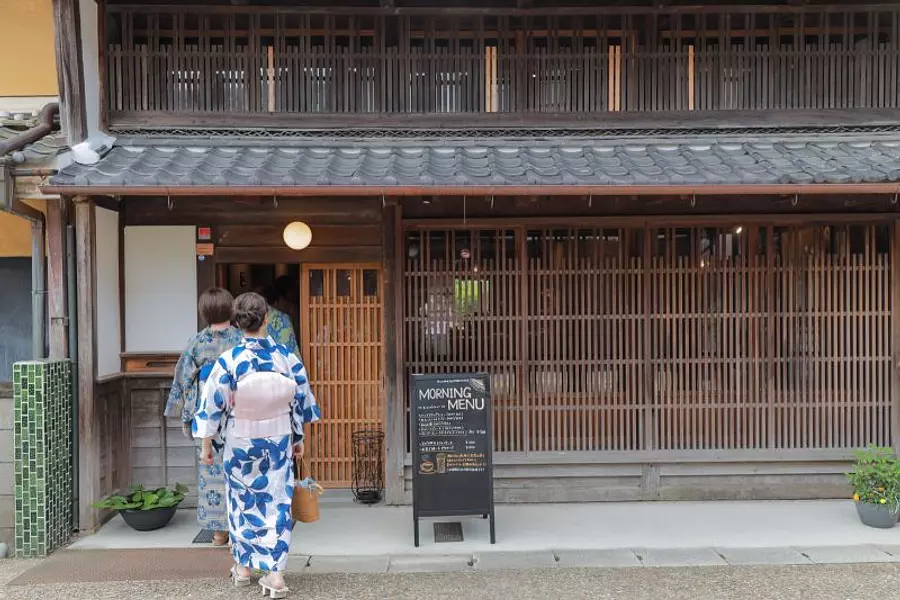
Old house cafe/restaurant “EN”
About an hour after we started walking around town, it was time for lunch.
To take a short break, let's have lunch at the old folk house cafe/restaurant "EN" located right near the Seki Machinami Museum.
Since the restaurant just opened in November 2021, we will be reporting on the latest gourmet food in Sekijuku.
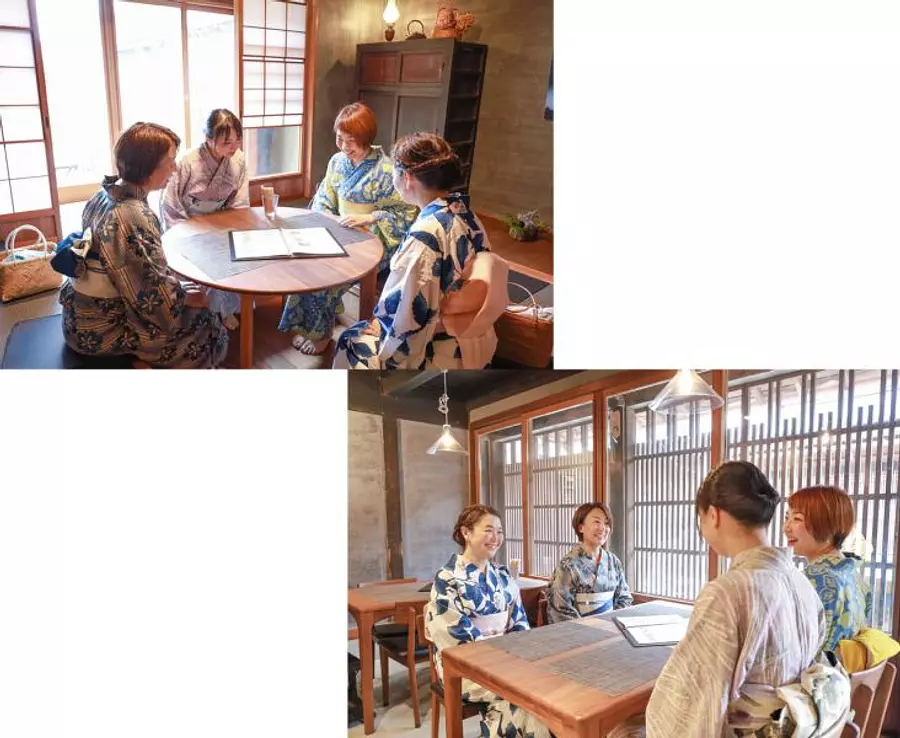
First of all, let's look at the inside of the store. The modern Japanese interior gives you the nostalgic atmosphere of a townhouse and is very stylish.
Seating options include counter seats, table seats by the window, and private rooms with sunken kotatsu seats, and the space is relaxing with jazz background music.
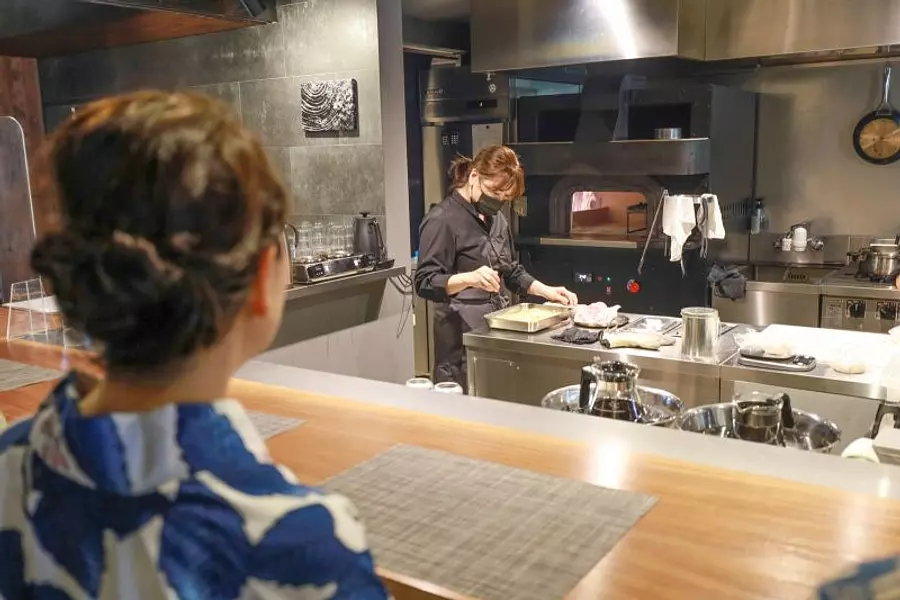
At ``En,'' you can enjoy dishes made in a stone oven, including stone oven pizza and stone oven-roasted vegetable curry, as well as a full menu of coffee and sweets.
The stone oven is located right next to the counter seats, so you can watch the pizza being baked up close. Therefore, the fragrant aroma of pizza was drifting inside the store.
The lunch set includes three types of stone oven-roasted vegetable curry lunches and three types of homemade stone oven pizza made with acorn flour, each with different seasonings and types of ingredients.
For this interview, we ordered one curry and one pizza lunch set♫
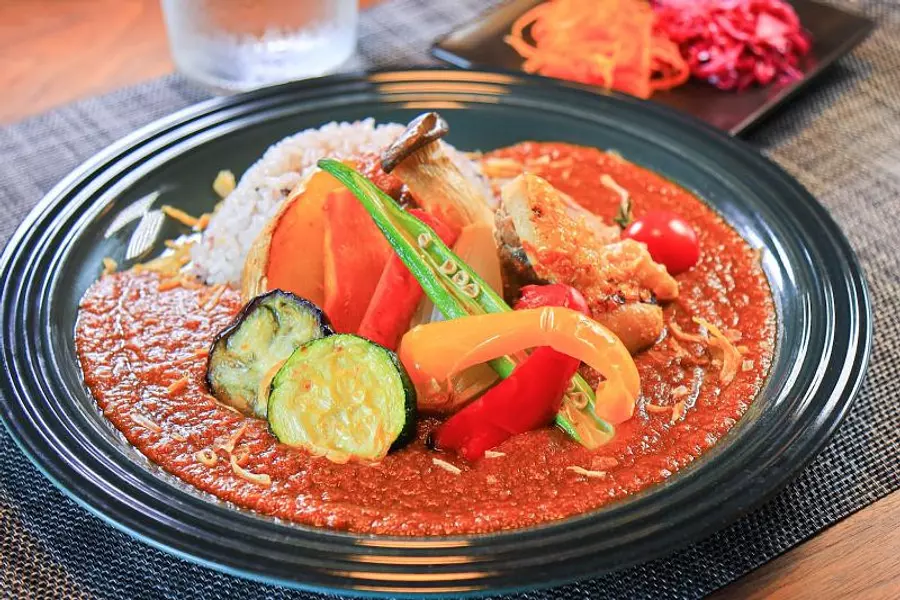
This is "Secret Spicy Tomato Curry (¥1,900)", one of the stone oven-roasted vegetable curry lunches.
It contains plenty of colorful stone oven-roasted vegetables, and the spicy aroma of curry will stimulate your appetite.
This lunch set comes with carrot and purple cabbage rabe, dessert, and coffee or tea.
The flavor I'm curious about is... It's a rich curry with lots of flavor, and the surface of the stone oven-roasted vegetables is fragrant, and when you bite into it, the sweetness spreads and it's juicy!
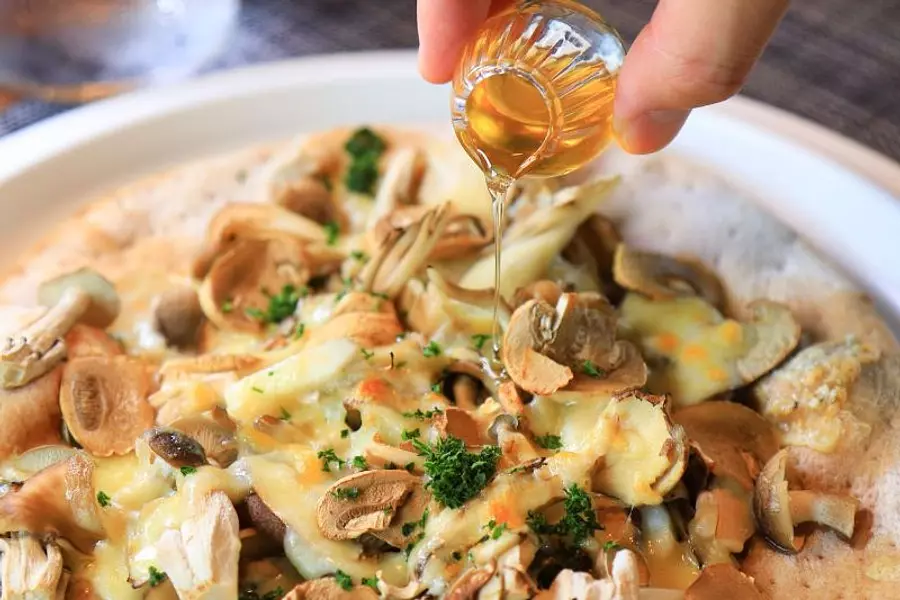
The next food report is "Mushroom and 4 kinds of cheese pizza (¥1,600)" which is one of the homemade stone oven pizza sets made with acorn flour.
This lunch includes dessert and coffee or tea.
As soon as it arrived at my seat, I was immediately struck by the rich aroma of mushrooms and gorgonzola, and I was also drawn to the appearance of the many toppings. Acorn flour is used in pizza dough.
The pizza is about medium size, and I think it's large enough to satisfy even an adult man.
The flavor I'm curious about is...the acorn flour dough has a crispy texture, and the cheese and mushrooms go perfectly together♪
By adding the honey and syrup that comes with it, you can enjoy the sweetness, and the taste stays with you until the end.
The dessert that day was gelato, and I was very satisfied with the well-balanced lunch menu with a refreshing aftertaste.
Business information for the old folk house cafe/restaurant “EN”
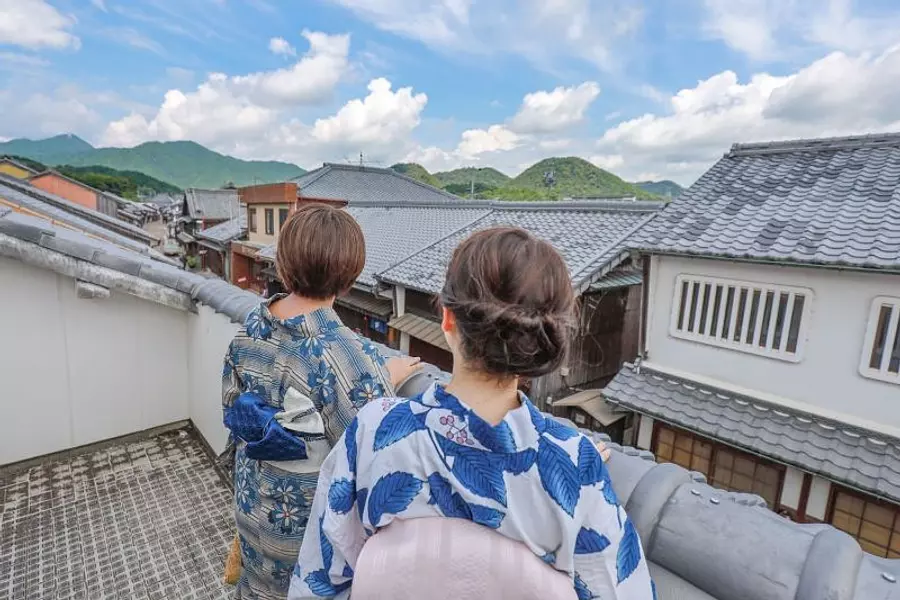
Chosekan-tei
After enjoying a delicious lunch, the next step is to head to Sekijuku 's observation spot, Choukantei.
This is a spot where you can look down on the cityscape of Sekijuku from a high place, and the second floor is the observation area.
Here are some photos taken using a super telephoto lens ↓
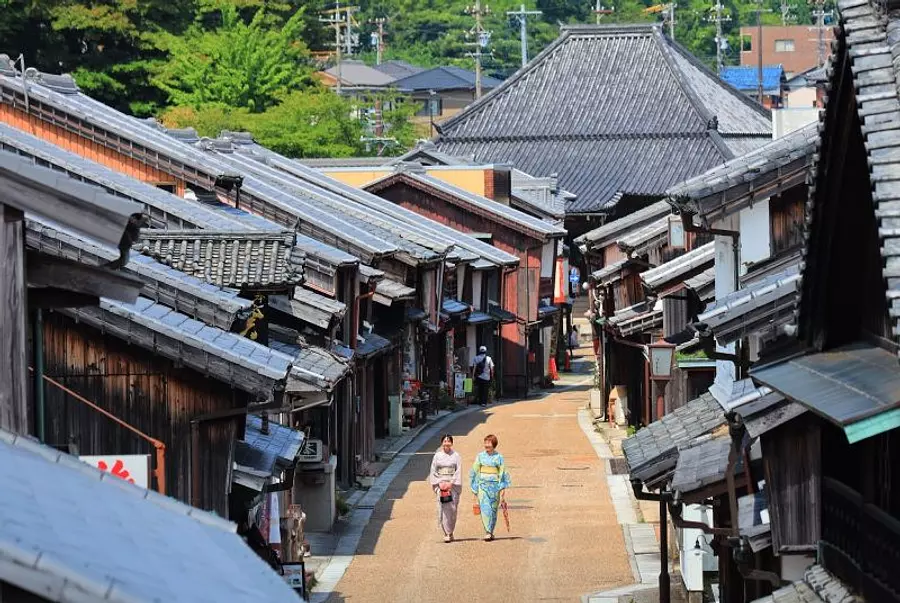
The sight of townhouses with tiled roofs lined up in rows is an overwhelming beauty!
It's also recommended as a photo spot while walking around town, and I think it's a place where you can really feel the vestiges of a post town.
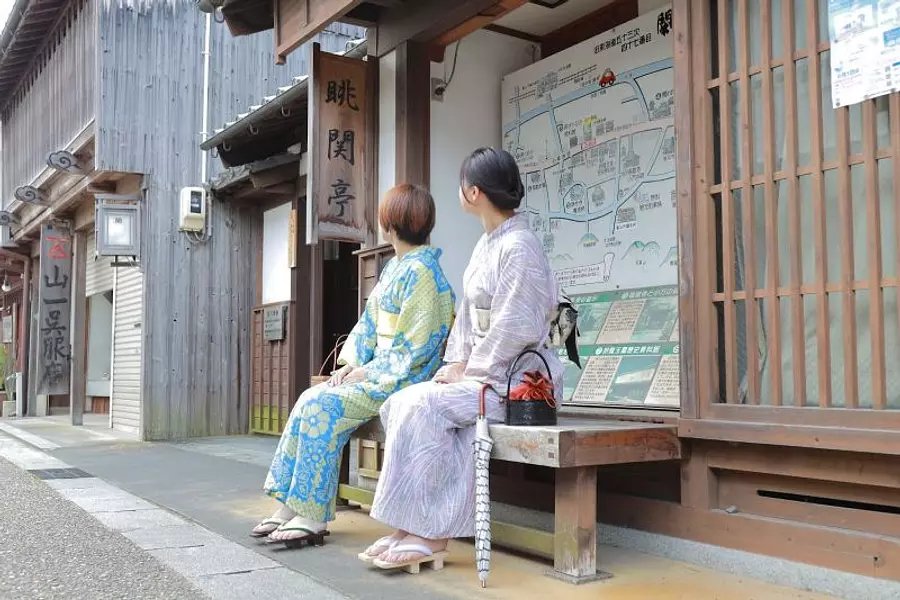
Chosekan-tei is a building located in a small park called Hyakurokuritei, and there is a bench near the entrance.
It's nice to sit here and look at the old Tokaido ♫
You can enter Hyakurokuritei for free, but please note that the gate is closed except for the opening hours of 10:00 to 17:00.
Business hours of Hyakurokuritei /Choukan-tei
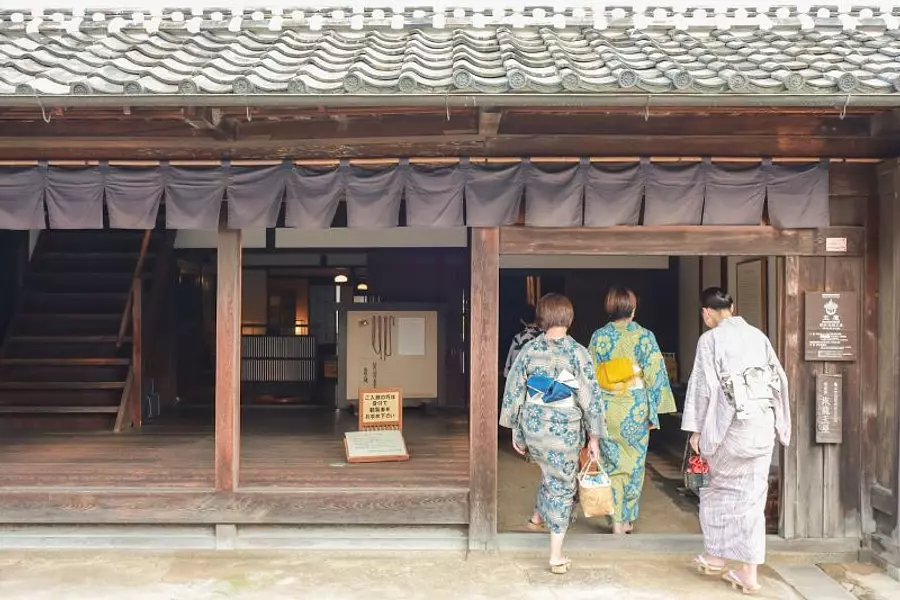
SekijukuHatagoTamayaHistoryMuseum
Next, let's enter Sekijuku Hatago Tamaya History Museum, which is located right next to Chokan-tei.
This place was once a large inn used by samurai and common people, and the tools and historical materials used by innkeepers during the Edo period are on display.
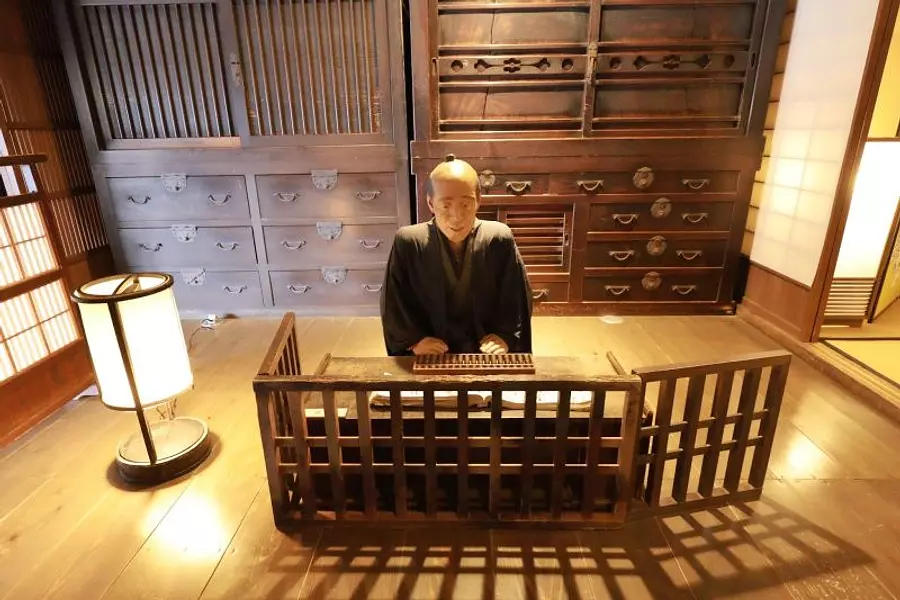
As soon as I entered, I saw a doll in a sitting position on display. An abacus is in hand, and a booklet that looks like a list of guests is placed on the desk.
This is a place like the front desk of a hotel, and there are several pairs of straw sandals.
During the Edo period, when walking was the mainstream means of transportation, walking long distances was commonplace, so people would buy new straw sandals wherever they went. This is where the phrase "two bundles and three sentences" comes from.
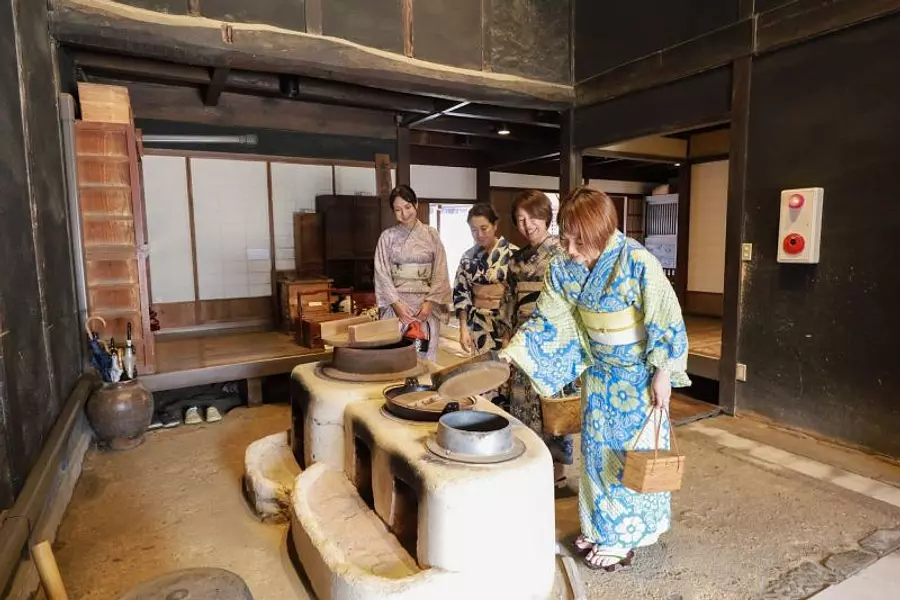
As you go deeper into the building, you'll see a nostalgic stove in beautiful condition, and you can even touch it and observe it.
To ensure ventilation, the area around the stove had a high ceiling, making it difficult for smoke to accumulate in guest rooms.
There are many other places where you can witness the architectural techniques of the Edo period, so please take your time to observe them ♫
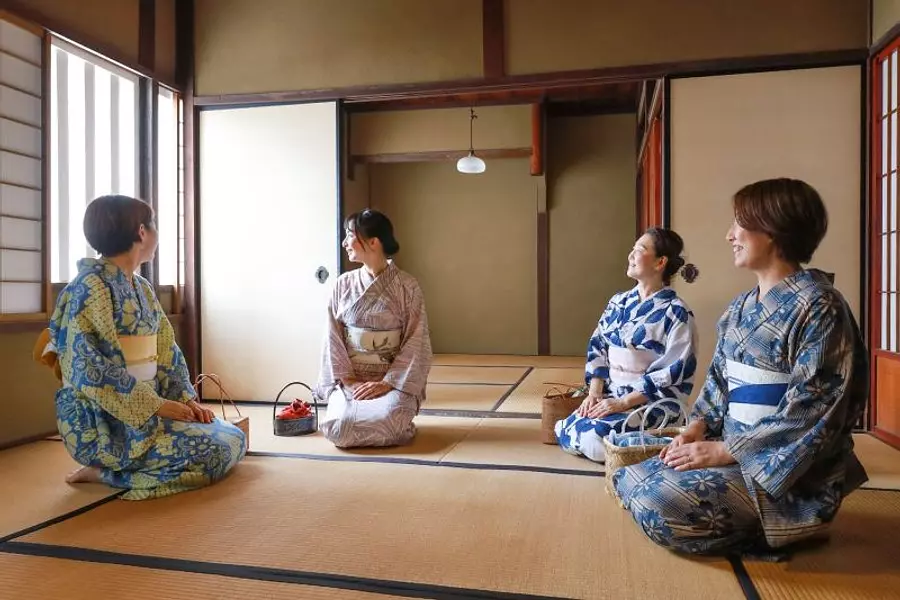
If you go up the wooden stairs to the upper floor, you will find the guest rooms, which range from large rooms to rooms with great views.
At the time, when the town flourished as a post town, the standard lodging rate for a typical inn was 200 to 300 mon per night, or 3,000 to 5,000 yen in today's currency.
When it was crowded, we were sometimes forced to share a room.
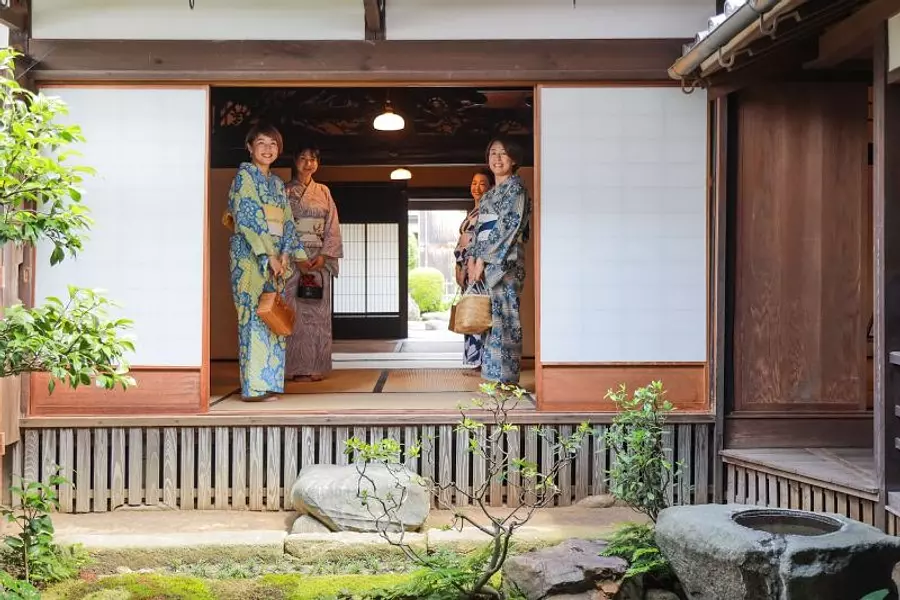
There is a well-maintained courtyard between the annex and the annex, giving you the feel of an old townhouse.
This is also recommended as a photo spot, and it goes perfectly with kimono and yukata ♫
Many of the machiya houses in Sekijuku have courtyards, and the `` SekinoyamaKaikan'' and ``Seki Machinami Museum'' introduced in this article also have courtyards.
Observing the differences in the courtyards of each building is one way to enjoy Sekijuku even more♫
SekijukuHatagoTamayaHistoryMuseum
0595-96-0468
Same as Seki Machinami Museum
Adult 300 yen (250 yen)
Students/Pupils/Children: 200 yen (150 yen)
Common admission fee for 3 museums (SekijukuHatagoTamayaHistoryMuseum, Seki Machinami Museum, Sekinoyama Kaikan)
Adult 500 yen (400 yen)
Student/Student/Children 300 yen (200 yen)
*Figures in parentheses are group rates for 30 or more people.
9:00~16:30
Monday (the next day if Monday is a holiday or substitute holiday) 12/28 - 1/4
Please park at Sekijuku sightseeing parking lot (about 10 minutes walk)
About 10 minutes walk from JR Seki Station
Approximately 10 minutes from Meihan National Highway Seki IC
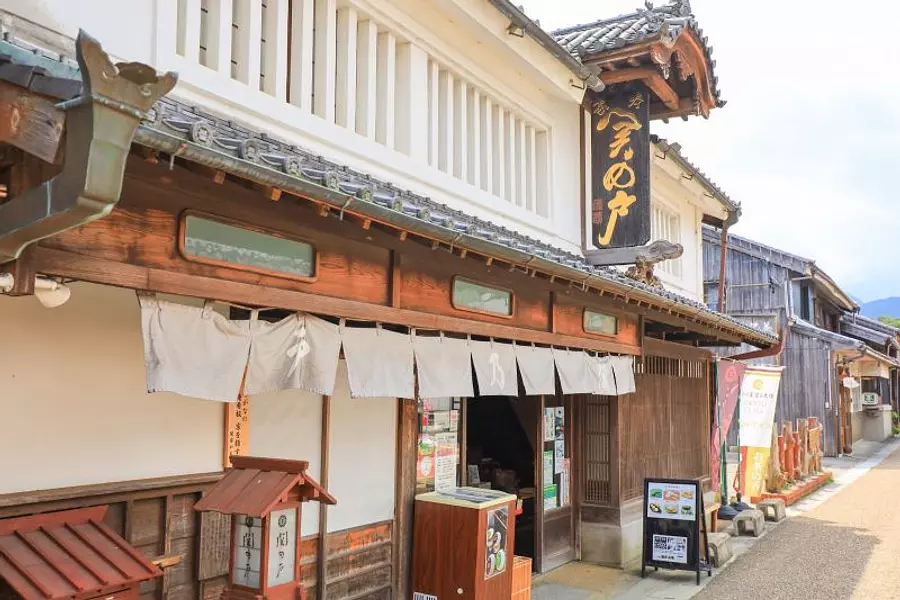
Fukagawaya (Sekinoto)
Finally, stop by "Fukagawaya" and enjoy choosing souvenirs ♫
This is a long-established store that has been in business for 380 years, and is a shop that has passed down the tradition of Sekijuku 's famous confectionery, `` Sekinoto.''
Fukagawaya is located right next to the Hatago Tamaya History Museum, and is a spot you can stop by on your way back to the parking lot on this model course.
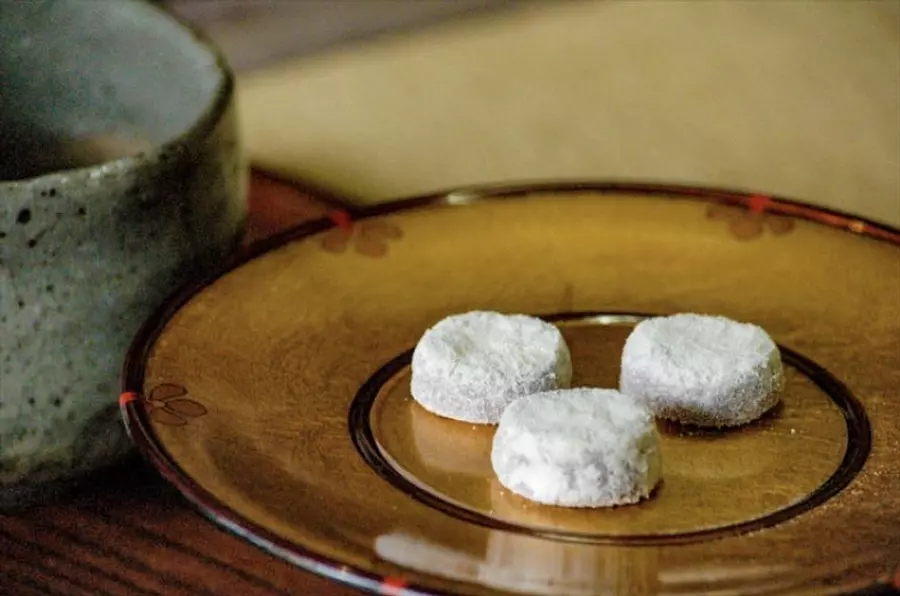
Sekinoto no-to is a rice cake sprinkled with Wasanbon, and is made of red azuki bean paste wrapped in white gyuhi skin.
A long time ago, it was popular among the feudal lords who frequented Sekijuku, and was even recognized by the Kyoto Imperial Court as a famous confection with a long history.
It is said that the shape and appearance are inspired by the snow that falls on the mountains of Suzuka, making it a classic and elegant Japanese sweet that would make a great souvenir.
Sekinoto has also been certified as KameyamaCity own local brand, ``Kameyama Brand.''
Click here for the Kameyama brand (KameyamaCity homepage)
↓↓↓↓↓↓
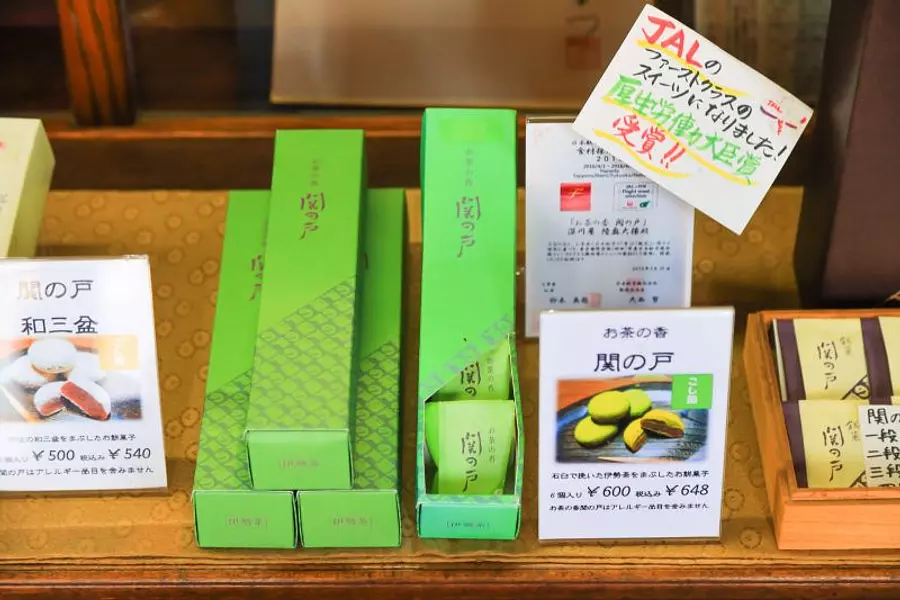
There are many types of Sekinoto, but among them, "Ocha no Kaori", which was released in 2014, won the Minister of Health, Labor and Welfare Award and was selected as JAL's first class sweet.
``Tea no Kaori'' is made by sprinkling Ise GreenTea in a stone mill, and the inside of the gyuhi is strained bean paste.
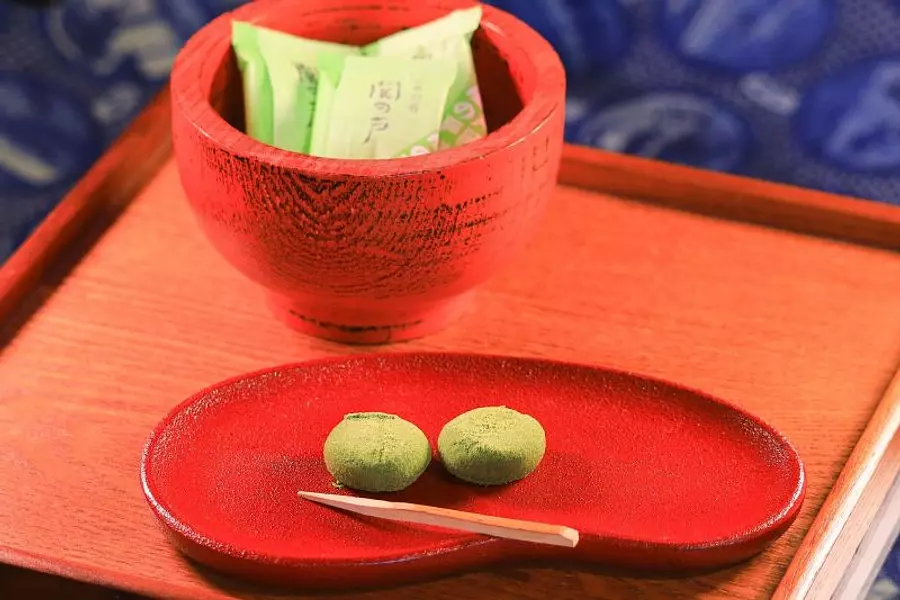
This is Sekinoto, which is known for its ``tea incense'' and is characterized by its green appearance, which has been sprinkled with plenty of Ise GreenTea powder.
Compared to Seki no To, which is sprinkled with Sekinoto, it retains its elegant taste, but is less sweet and has a taste that allows you to feel the astringency of the tea ♫
It's a mochi sweet that you'll want to eat with hot tea, and I think it's a masterpiece that lovers of astringent tea won't be able to resist.
In addition, in 2019, an ancient document found inside the store contained a description of ninjas, and it was revealed that ``Fukagawaya'' was a Japanese sweets shop that was a hideout for ninjas. It seems that the owner, Mr. Hattori, is also a descendant of ninjas.
When you come to Sekijuku, be sure to try Sekinoto, which continues to evolve while preserving the tradition from the Edo period.
Fukagawa Sekinoto no To Honpo
0595-96-0008
10:00~17:00
Thursday
10 minutes walk from Seki Station on the JR Kansai Line
10 minutes from Meihan National Highway “Seki IC”

On the way back from Fukagawaya to the parking lot at the starting point, there is a souvenir shop "Sekimise Kichiemon" that opened in 2019.
You can buy local specialties from KameyamaCity and Mie Prefecture, so please stop by.
Sekimise Kichiemon
0595-86-5780
10:00~16:00
Irregular holidays
Sekijuku sightseeing parking lot
10 minutes walk from JR Seki Station
5 minutes from Meihan National Highway Seki Interchange
Download gourmet map and wandering map
You can download gourmet maps and wandering maps that are useful for sightseeing in Sekijuku from the links below.
In addition to information on the shops and spots introduced in this article, there is also a map full of the charms of Sekijuku, so please make use of it.
"Kimomo-do", where you can rent Ise-Momen kimonos, is now open.
Kimomodo, a shop where you can rent kimonos made from Ise-Momen, a traditional craft from local Mie Prefecture, has opened in February 2023!
The owner, Setsuko Taniwaki, is a member of the Mie Culture Love Association, which is the model for this article.
Inside the store, we offer rentals of Ise-Momen kimonos and retro yukatas.
*Currently, kimono rental is temporarily available only for women.
Prices start from ¥5,500 (tax included) for a complete kimono rental set (including dressing), and you can make a reservation for the experience from the website below.
Strolling around Sekijuku in a yukata or kimono will give you the feeling of a timeless excursion that you can't get with your regular clothes.
Kimomodo is located near Sekijuku 's observation spot "Chousekitei", so you can enjoy sightseeing in Sekijuku right away.
Men's kimono rentals are scheduled to start from October 2023, so please check the Kimomodo official Instagram for the latest information.
Kimomodo business hours
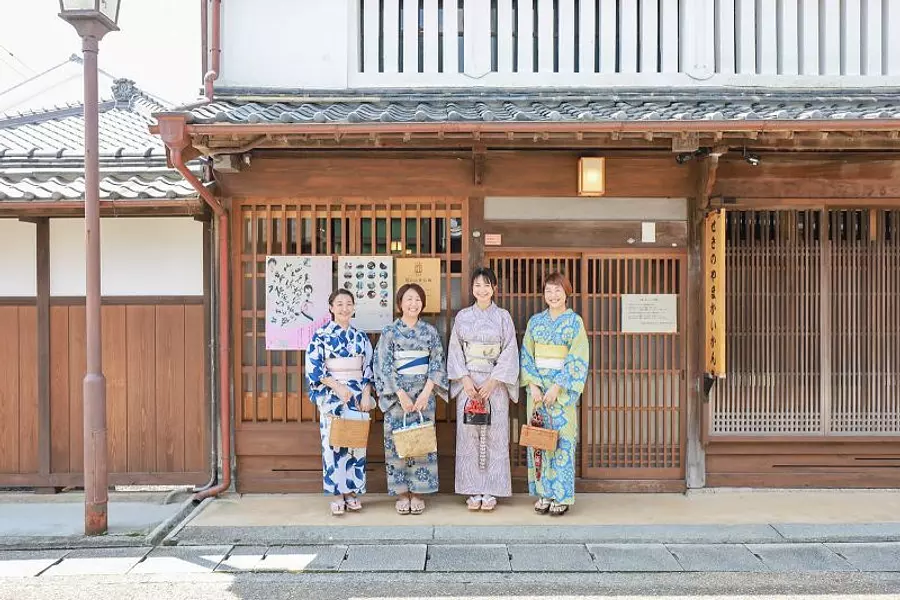
What did you think
We have presented a model course that traces the history of Sekijuku, which flourished as a post town during the Edo period.
I introduced how you can walk around town wearing a yukata, and the Edo-Meiji era townscape has been preserved as it is, so I felt like I had traveled back in time while I was reporting.
The restaurant "En" introduced in this article opened in 2021, but now in Sekijuku, restaurants that have been renovated from old houses are opening one after another.
Please be sure to visit Sekijuku, which continues to evolve as a modern tourist spot while retaining its historical scenery.

Fugamaru-chan (photography/article production)
He is a member of Mie Tourism's Mie Travel Camera Club and is active mainly on Twitter and Instagram as a photographer who takes pictures of Mie. We operate the Mie Photo Gallery, which distributes Mie's scenery for free, and the Mie Eetoko Tour, which disseminates Mie's latest information.
Tokaido Sekijuku
0595-97-8877
Please park at Sekijuku sightseeing parking lot (about 5 minutes walk)
Tourist parking lot: 4 large spaces, 16 regular spaces, 1 thoughtful parking space (free)
Click here for the location (google maps) https://goo.gl/ygWQ5A
About 5 minutes walk from JR Seki Station
Approximately 5 minutes from Meihan National Highway Seki IC
| Category | |
|---|---|
| season | |
| area |
Related spots
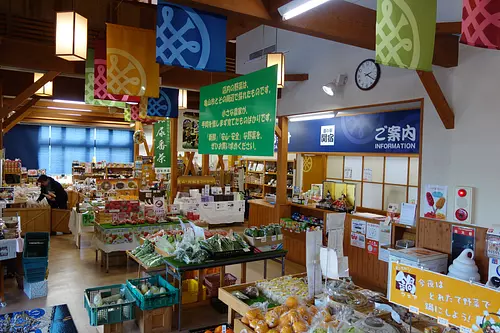
Michi-no-eki Sekijuku
Northern forces
KameyamaCityMichi-no-eki is located at the entrance to Sekijuku, the 47th post town on Tokaido route that has existed since the Edo period. It has a distinctive wooden and tiled exterior that matches the townscape. The shops are lined with fresh locally grown vegetables, specialty products and famous sweets made with local ingredients. There is also a restaurant where you can enjoy local B-class gourmet dishes such as ``Misoyaki Udon'' and ``Kameyama Ramen.'' In addition, there is a rest corner with tatami flooring, an information corner with information on sightseeing in the area, and a health promenade paved with pebbles that stimulates pressure points on the soles of your feet, so you can heal the fatigue of your trip! We hold a fresh vegetable market called "Mamezoroi" every Sunday. [Recommended Specialties] - `` Sekinoto'', ``Shiradama'', ``Kameyama Tea Soft Drinks''...Among the souvenirs, the historical confectionery `` Sekinoto no To'' and ``Shiradama'' are popular.
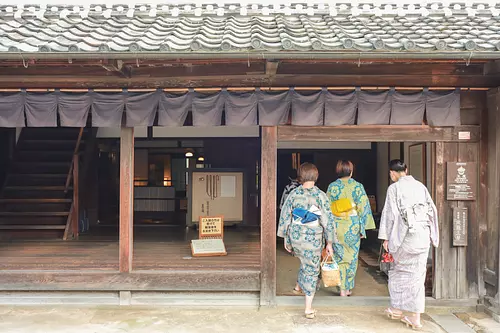
SekijukuHatagoTamayaHistoryMuseum
Northern forces
KameyamaCitySekijukuHatagoTamayaHistoryMuseum has restored a valuable Edo-period hatago architecture that has been designated as a city cultural property, and exhibits the tools and historical materials used in the hatago. We invite you to the world of Edo post stations along with the historic townscape of Sekijuku.
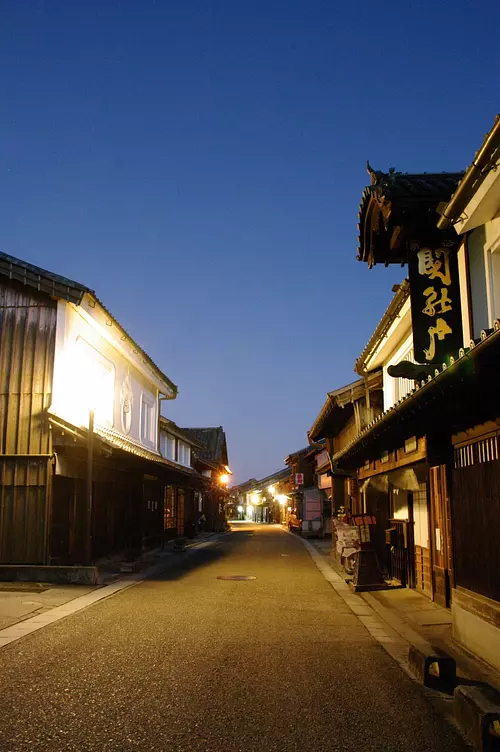
Tokaido Sekijuku
Northern forces
KameyamaCitySekijuku flourished as the 47th post town on the 53 stations Tokaido, and still retains the atmosphere of that time. More than 200 townhouses built from the late Edo period to the Meiji period still exist here, and it was selected as a nationally important preservation district for groups of traditional buildings (selected in 1981) and one of Japan's top 100 roads (selected in 1986). It has been selected as a tourist destination and has a lot to offer. Recently, it has become popular as a photogenic spot that looks great on Instagram. Why not enjoy a relaxing walk around town?






